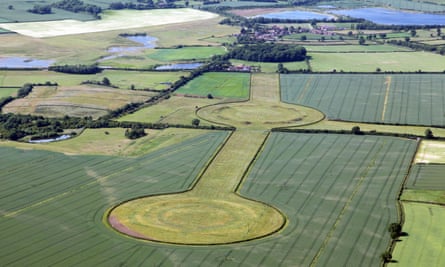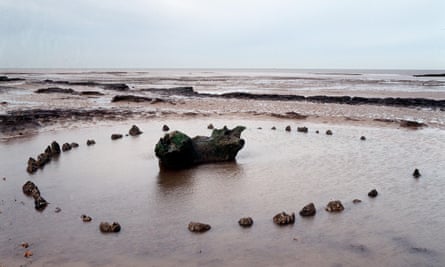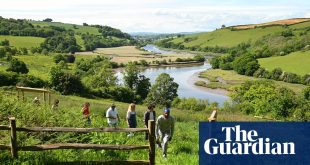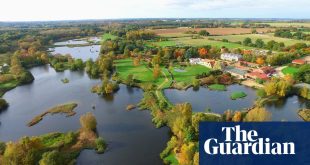Spring is coming, and I am planning a pilgrimage. I’m going to the vast landscape of the Lake District to visit two of the country’s most picturesque and fascinating prehistoric monuments: Castlerigg stone circle and Long Meg and Her Daughters.
Castlerigg, a circle of 38 boulders of varying sizes, the tallest standing over two metres, is about a 1½ miles from Keswick. It sits on a plateau ringed by some of Cumbria’s highest fells: Blencathra, Helvellyn, Grasmoor and Skiddaw. The view from the circle is so impressive that when Samuel Taylor Coleridge visited in 1799 with his friend William Wordsworth, he declared “the mountains stand one behind the other, in orderly array as if evoked by and attentive to the assembly of white-vested wizards”.
Half an hour’s drive from here, to the north-east of Penrith, and on a sandstone terrace above the River Eden, is another assembly – not white-vested wizards this time, but witches – the wonderfully named Long Meg and Her Daughters. Folklore says a Scottish wizard turned a local witch and her daughters to stone here as punishment for dancing wildly on the sabbath. The daughters are represented by 69 stones – mainly granitic glacial erratics – some standing, most fallen, forming an oval more than 100 metres long, making it one of the largest stone circles in England. Long Meg herself – a decorated 3.5-metre monolith of red sandstone – stands outside this ring, watching over her daughters.
We know little about these ancient monuments. They were built and used during either the neolithic or the bronze age (we lack precise dating) and their meanings are clearly multilayered. People in prehistoric times travelled to them – much as people today still do – perhaps in the style of a pilgrimage, and their shapes created arenas for gatherings, ceremonies and performances.

They were also carefully and deliberately positioned near rivers and springs, and so in a sense they gather together natural features. Combined with the stones themselves, these form a celebration of the landscape.
But these monuments embody something else, too. They contain astronomical alignments that mark the changing of the seasons. Long Meg is directly aligned with the midwinter sunset, and some of the stones at Castlerigg are aligned with the midwinter sunrise. And although neither monument has been subjected to modern archaeoastronomical studies, there is a suggestion that they were also placed with lunar positions in mind, linking them with the equinoxes (from “equal” and nox meaning “night”, when day and night are almost the same length). Both monuments seem to indicate the autumnal equinox, while one of Long Meg’s Daughters – a red stone, like Meg herself – appears to mark the vernal equinox, the coming of spring.
The rhythm of the changing seasons beats through our landscape like a heart: days extend and shorten, light grows and fades in strength. And this rhythm pulses through us, too. Or at least it did once.

Each season brings its own magic, but spring is special. It’s a time of rebirth and fertility, when the world re-greens and the air is warm and wet. It is the time of the first swallows, cuckoo sound and cuckoo spit, bees, butterflies and bluebells. Animals come out of hibernation in spring. It’s also a time for ditch-digging and fencing, logging, ploughing, sowing and weeding. And in the not-so-distant past, for court and nobility it was a time of hunting, hawking and jousting. With improving travelling conditions people can head out on the road again in spring. March, named after Mars, the Roman god of war, was when military campaigns traditionally began after a winter break.
For hunter-gatherers the seasons were no less important. We can see something of this at a site on the coastal fringe of the Severn estuary, south-east of Newport in Wales, a place known as Goldcliff. This precious site hosts within its estuarine silts a series of preserved Mesolithic footprints that show communities active on the mudflats. Children dance around carefree and adults confidently stride out to unknown destinations. Some, no doubt, are tracking animals and migrating birds, others checking fish traps. These date from the end of the sixth and the beginning of the fifth millennium BC, a time before farming and domesticated animals. Remarkably, the mud is sun-cracked, showing that people were heading out when the months were warm.
The seasons had existential importance for prehistoric farmers, too. Annual cycles were formed of ploughing, sowing crops and harvesting, as well as the seasonal movements of people and animals between lowlands and uplands, drylands and wetlands. It was essential to understand precisely where they were in the year.
after newsletter promotion
This seasonal knowledge was built into monuments such as Castlerigg and Long Meg and Her Daughters. And later prehistoric societies built several monuments across Britain and Ireland to align with celestial events at certain times of the year. The most famous, Stonehenge, is aligned with the sunrise and sunset of the midsummer and midwinter solstices – the longest and shortest days of the year, when the sun appears to pause its movements as the year pivots into a new season. Solstice comes from the Latin sol (sun) and stitium (stilled). The same is true of Newgrange in Ireland and Maeshowe in Orkney, while the Thornborough Henges in North Yorkshire – recently gifted to the nation – may even reference Orion’s Belt.

Celestial events indicate certain times of the year, but so do tides. Another prehistoric circle, made with timber this time, hints at this. Seahenge, preserved in waterlogged silts near the village of Holme-next-the-Sea in Norfolk and excavated in 1998, is an elliptical ring of 55 closely fitted oak posts that once stood three metres high. Dendrochronology (the science of tree-ring dating) tells us these were felled at the start of the bronze age, specifically in the spring and summer of 2049 BC. In the middle of this towering ring was the stump of a large oak, weighing 2½ tonnes. Its builders had heaved it into position using ropes of woven honeysuckle. Curiously, the stump is upside down, so the trunk disappears into the ground and the roots spread out above like a canopy, transposing the natural order. We don’t know the meaning of this monument, nor the time of year it was used, but we may find a clue in the detail that it was built close to the point of the highest spring tide – a tide caused by greater gravitational pull.
These monuments – Castlerigg, Long Meg and Her Daughters, Seahenge and the others – are an intertwining of skyscapes and landscapes. Entanglements of places and natural features – of timber, stone and water, as well as the movements of the sun, moon and tides. The seasons were built into monuments and people’s lives.
Our modern world has done much to minimise the inconvenience of the changing seasons, and their effect on us. But for those who listen carefully, that rhythmic beat is still there, tapping out its tempo.
This spring I will be heading to Castlerigg and Long Meg and Her Daughters again, and I will take care to listen for this cadence that will connect me to them, and them to the land and the sky.
Jim Leary’s book Footmarks: A Journey Into Our Restless Past (£18.99, Icon), will be published by Icon in June
 Top Naija News – Nigeria News, Nigerian News & Top Stories Top Naija News – Nigerian Newspapers, Nigerian News. topnaijanews is a daily Nigerian newspaper covering Latest News, Breaking News, Entertainment, Sports, Lifestyle and Politics.
Top Naija News – Nigeria News, Nigerian News & Top Stories Top Naija News – Nigerian Newspapers, Nigerian News. topnaijanews is a daily Nigerian newspaper covering Latest News, Breaking News, Entertainment, Sports, Lifestyle and Politics.



